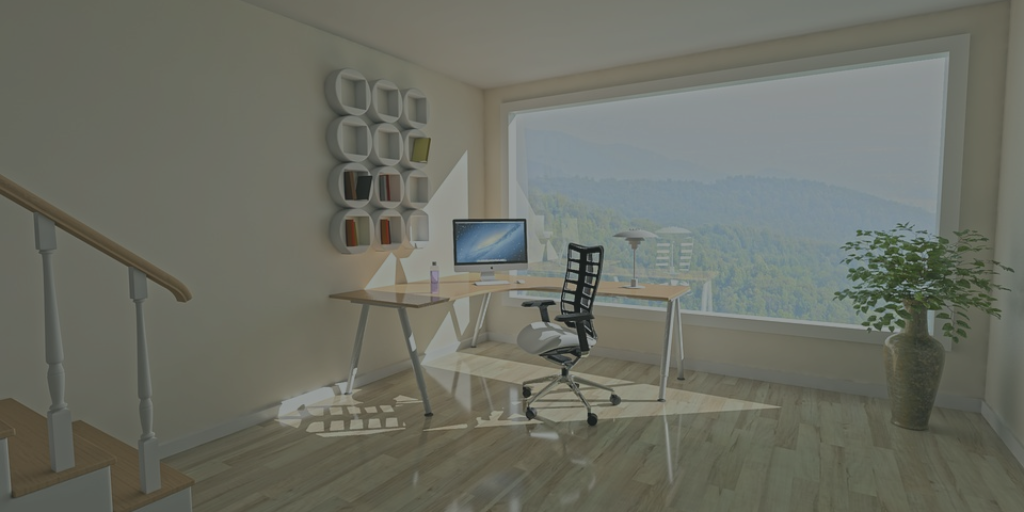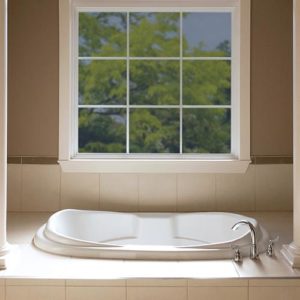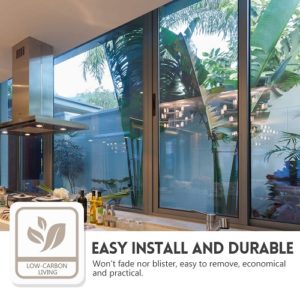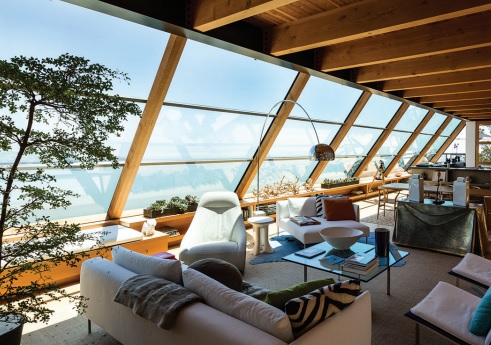Table of Contents
- Benefits of Residential UV Blocking Window Film
- Questions to Answer before Choosing a UV Blocking Window Film
- Temporary vs. Permanent Window Film
- Features to Choose for UV Blocking Window Film
- Installing Window Film
- Frequently Asked Questions (FAQs)
- Recommended Related Articles
Benefits of Residential UV Blocking Window Film
Depending on your particular needs and preferences, residential UV blocking window film can offer tremendous benefits to your home, including:
- Improved Energy Efficiency & Cost-Savings
- Heat Reduction
- Reduced Risk of Skin Cancer and Premature Skin Aging
- Fade Protection for Furniture, Carpets, Rugs & Artwork
- Glare Reduction for Better Viewing of TV & Computer Screens
- Sustainability with Prolonged Window Lifespans>
- Improved Home Wellness with Safe Natural Lighting
- Reduced Usage of Electric Lighting
- Little to No Maintenance
- Flexibility
- Enhanced Window Aesthetics; and
- Affordable Alternative to Replacing Windows
The last benefit, affordability, is important to keep in mind, as costly new windows may not be necessary to resolve your key needs effectively.
Window film can be temporary (e.g. removable static) or permanent applications. Many window film products can be self-installed (DIY), but there are many professional window film installation companies from which to choose.
Protecting the interior of your property from harmful UV rays is easy with the installation of window film on all glass doors and windows facing intense sun in summer months. Studies have shown that window film can reduce the internal, summertime temperature by as much as 20 degrees versus the outdoor temperature.
“What’s the point of having a window if the blinds are always closed.”
– Emil Vertes, former Property Manager, The Sorbara Group
From: Myths About Window Film by Convenience Group Inc. (CGI)
Questions to Answer before Choosing a UV Blocking Window Film
Before you get started, there are a few choices you need to consider when selecting a UV blocking window film for your home:
1. Do you want temporary (removable) or permanent (more durable) film protection?
2. Do you also want to reduce sunlight, reduce heat, increase privacy, add safety protection, add a decorative treatment, or a combination?
3. How much UV and visible light, or opacity, do you want to pass through the film?
If you are unsure of your needs or feel that your situation is more complex, we recommend reaching out to a few local professional window film installers to understand options and price ranges. At the end of this article, there are dealer-locator links for a few reputable window film brands that can help you locate qualified installers in your local area.
Another benefit to speaking with professional installers is to learn of newer technologies, especially transitional window films. Though there are different underlying approaches and technologies that produce differing effectiveness, transitional film allows window tint to dynamically adapt to sunlight throughout the day and night.
Temporary vs. Permanent Window Film
Temporary Window Film
Window film can be a permanent or a temporary feature on your glass windows and doors. Temporary film is also referred to as “removable” or “reusable“, and typically uses static cling. Choose a temporary window film if you live in a climate with heavy summer sun. You may prefer to remove temporary film during the cooler winter months to regulate your home’s internal temperature.
Also, if you have double-paned windows, you may want to choose temporary window film to prevent excessive heat buildup between the two panes and possible glass breakage. In this case, the film is applied on the outside of the window, not the inside, as is normally the case. Temporary film comes in various shades for darker privacy (5% opacity) or less privacy (46% opacity). These temporary window films are designed to be easily removed.
If you are considering decorative window film, keep in mind that a high percentage of decorative film is in the “temporary” category. Being able to easily remove or reuse decorative film is a great benefit for either seasonal usage or if you are worried about your aesthetic tastes changing sooner than expected.
Another application of temporary window film is using it to provide short-term privacy during renovation projects when windows lack treatments and are bare.
Permanent Window Film
Permanent window film uses adhesives and is applied with the intent that it will not be removed with varying seasons. Permanent window film is also more durable in nature and cannot be reused once removed from an installed window. The application process is similar to temporary film. However, the drying step assures a tighter seal to the window’s surface based on the vinyl- or polyester-based materials.
It is important to note that moisture, either ammonia or water, is an enemy of the permanent material and will cause the film to deteriorate or peel over long exposure to these elements. As long as you heed the moisture warning, your permanent window film should remain effective and functional for 10 to 15 years.
Features to Choose for UV Blocking Window Film
Once you have made the choice between temporary and permanent window film, the next step is prioritizing your reasons for installing the film: are you concerned about UV rays, sunlight, heat, glare, fading, privacy or safety?
- UV Blocking
- Sun Blocking & Heat Reduction
- Fade Protection
- Privacy Window Film
- Safety Window Film
- Combined Features
UV Blocking
UV window film comes in varying degrees of UV protection. A number of manufacturers, who sell UV protection window film, offer products with the ability to block varying percentages of the sun’s UV rays. Some of the products we reviewed can block anywhere from 80-99% of UV rays. This level of blockage offers a dramatic effect at reducing the interior temperature of your home, while protecting your home’s interior and furniture from fading and degradation, caused by harsh sunlight.
One manufacturer touts that their product blocks UV rays so well, that it may eliminate the need for air conditioning in your home during warmer months. Unlike privacy window film, some UV blocking products are invisible to both interior and exterior viewers. In other words, although the product is providing protection from the sun’s UV rays and heat, it does not providing privacy protection. This is often preferable for those who desire inconspicuous heat and sun protection.
Sun Blocking & Heat Reduction
Heat from sunlight comes from two primary sources:
- Visible Light, which you can see
- Infrared Light, which you can feel
The amount of infrared light blocked in a window film is critical to reducing heat caused by sunlight, which will enable a higher percentage of visible sunlight to fill your space, if so desired. A popular request for many homeowners with gorgeous views is to request a window film that will “invisibly” reduce heat and harmful rays to enjoy the view unobstructed by any window treatments.
Fade Protection
Though UV rays are the primary cause of furniture and fabric fading, solar heat and visible light also contribute to the breakdown and discoloration of your household furnishings and decor. To learn of additional options on how to protect your interior spaces, be sure to read How to Protect Your Indoor Furnishings from UV Rays.
Privacy Window Film
Privacy window film is offered as either reflective (mirror) or frosted. A typical use case for this type of window film is if you live on a busy street with a front facing window that allows easy visibility into your home. Reflective or frosted window film allows you to see outside without hindrance, but prevents prying eyes from peering into your home. This is also referred to as “one way” privacy, as it allows persons inside to see outside, while preventing persons outside from seeing inside.
It is important to note that all privacy window films that we researched will only provide daytime privacy. At night, light from inside the home will allow your interior to be viewable from the outside. Bear in mind, many of these privacy films also offer UV protection, but for ultimate UV protection, it may be best to choose a film made specifically for that purpose.
If you are looking for Decorative Privacy Window Film be sure to read our article Where to Buy Stylish Decorative Privacy Window Film for the Home.
Safety Window Film
Safety film provides excellent protection against broken glass, in the case of earthquakes or burglaries, where the window is smashed to obtain access to the home. Although the glass will break when force is applied, the pieces will remain affixed to the film and provide an impenetrable barrier preventing access from the exterior. The product is invisible and provides no privacy protection. However, in weather related glass breakage, the film will provide a weather barrier to prevent rain or snow from entering the interior of the home.
An interesting application for this this type of window film is for areas where graffiti etching on glass is a problem. In this case, the film would be applied to the outside of the glass, such that when the glass is vandalized by etching, the film can be removed and the glass will be protected. This is a much more economical way for store owners to reduce vandalism costs rather than having to replace large panes of expensive glass.
Combined Features
Because most UV window films come with multiple benefits, such as sun blocking and heat reduction, we recommend speaking with a product expert to specify what your exact key needs are. For example, if heat reduction is a major concern, you will need to focus on products that also block a high percentage of infrared rays. Conversely, it can be very productive to identify features that are unnecessary or unwanted to reduce the number of choices (e.g. tinted glass or safety protection).
Installing Window Film
Once you have chosen which UV window film is right for your needs, the process of installation is next at hand. Based on videos from various manufacturers, the process to install most window film is very easy and can be a DIY (Do It Yourself) project. For larger windows, we suggest a two man crew. Installing film on smaller glass windows can be done by one person. See the video below for a one man window film installation demonstration, using Gila window films and tools.
If you decide to install the film yourself, keep the following general rules in mind, regardless of which product brand you use:
- Be Patient
- Schedule sufficient time so that you are not rushed
- Make sure you will be able to monitor the window for the first 24-hours, as imperfections are correctable during this period
- Make sure you have all recommended tools
- Thoroughly clean both the window AND the immediate area of the window frame
- If the window is large, ask for a helping hand in advance of starting the project
- Use ample water or vendor-supplied solution on both the window and the side of the film that will touch the window
- Refrain from spraying ammonia or other harmful cleaners on the film (check product for details)
Here is a good demo video from Gila® (pronounced “hee-la”) that walks you through the process of installing window film using their product.
For more video tutorials from Gila®, visit their Residential playlist on YouTube.
Here is an informational video from CoolVu that gives an overview of their transitional window film:
Related Window Film Products
DIY Window Film
|
Gila® Heat Control Platinum Window Film Key Features:
|
|
Gila® Privacy Control Mirror Window Film Key Features:
|
|
KESPEN 1-Way Daytime Privacy Heat Control Anti UV Non-Adhesive Reflective Window Film Key Features:
|
Professionally Installed Window Film
|
3M™ Sun Control Window Film Prestige Series Key Features:
|
Premium Window Film Brands Dealer Locators
|
Dealer Locator Links |
 Solar Gard Dealers |
Frequently Asked Question (FAQs)
- Does UV protection reduce heat?
- Does window film prevent fading?
- Does window film harm indoor house plants?
Does UV protection reduce heat?
Yes, though UV rays are neither hot nor cold, objects and surfaces that absorb any kind of light, including UV light, will heat up, as they have more energy from this absorption.
Does window film prevent fading?
Yes, window film that is capable of blocking 90% or more of damaging UV rays, will significantly reduce and slow down the fading process of furniture and fabrics. UV rays are the primary cause of fading.
Does window film harm indoor house plants?
No, most types of window films will not harm indoor house plants, as the majority of window films let significant amounts of visible light into interior spaces. The exception is blackout window film which is designed to block visible light, which indoor house plants need to varying degrees.
Recommended Related Articles
- Where to Buy Stylish Decorative Privacy Window Film for Your Home
- How to Protect Your Indoor Furnishings from UV Rays
- The Many Uses and Benefits of Shade Sails
- Increase Your Home’s Energy Efficiency with Daylight Harvesting
- The New American Remodel 2021: Sustainable & Energy Efficient Beauty
- 10 Exceptional Products in the New American Home 2021
- The 411 on Phantom Screens: A Profile in Innovation
- UV Protection is One of the Many Benefits of Sustainable Outdoor Furniture
| Purgula is reader-supported. When you click on links to other sites from our website, we may earn affiliate commissions, at no cost to you. If you find our content to be helpful, this is an easy way for you to support our mission. Thanks! Learn more. |















